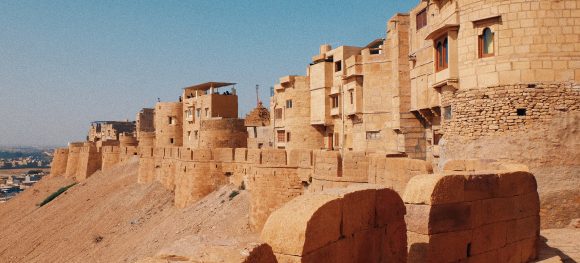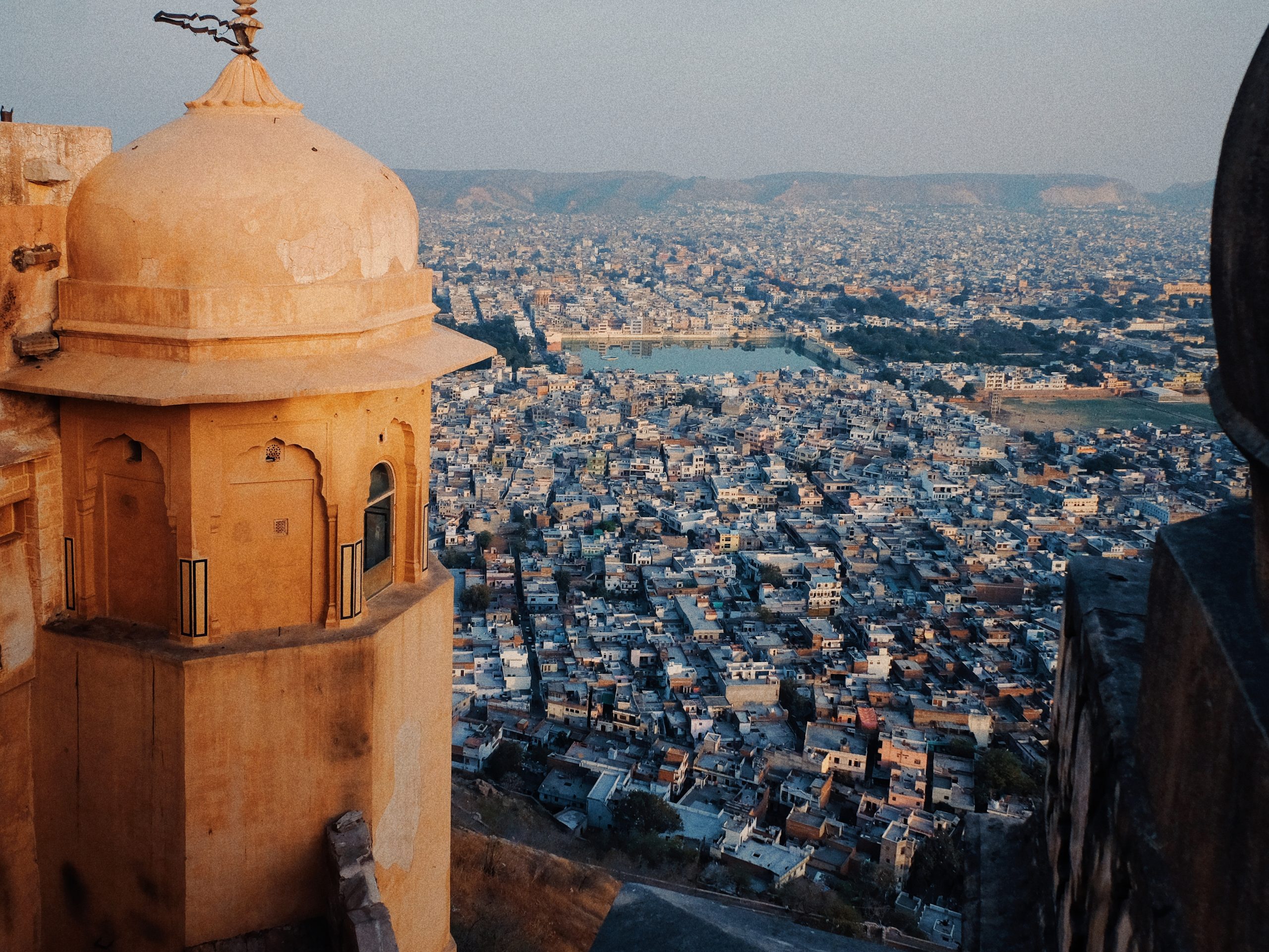




February 20, 2018. Jaisalmer Fort is a fortified city built on top of a desert outcrop in the middle of the vast Thar in northern India. Established in 1156 by the Rajput ruler Jaisal (hence, the name ‘Jaisalmer’), it continues to be inhabited by residents, which makes it one of the world’s remaining “living forts”.

Walking along the alleys in Jaisalmer Fort, I notice the color of almost all buildings is almost the same as the sands and stones of the desert. So when you look at the town from afar it literally looks like the town rose from the ground up. Jaisalmer is sometimes referred to as the golden city. Not difficult to see why, seen from the fort.

February 20, 2018. After an almost-13 hour train ride (yes thirteen hours) I arrive the next morning in Jaisalmer in the middle of the Thar desert. The town is closer to the Pakistan border than to any other major Indian city. Jaisalmer is still part of the vast state of Rajasthan.
Once I got to Jaisalmer in the morning, I walked from the station to my hostel which had a rooftop cafe with a magnificent view of the fort city, pictured above. I felt like I was in Agrabah (of Aladdin), only the big Sultan’s palace is missing.


February 19, 2018. The palaces inside Amer Fort are composed of four different complexes with their own enclosures. The first one features a large plaza where troops celebrated their victories on their return from battle by parades in front of the royal family.

Once you enter the first palace, you’d be greeted by a beautiful garden courtyard magnificently manicured to reflect perfect geometries.



February 19, 2018. On my last day in Jaipur I proceeded to Amer (Amber) Fort a few kilometers north of the city. It is part of the three-fort complex that traverses ‘Eagle Hills’ and forms a sort of ‘great wall’ that was meant to protect the city from invaders. I visited the first of such forts (Nahargarh Fort) the day before. It is also called the Amber Palace because it served as the main residence of the Rajput Maharajas and their families for centuries. The fort overlooks a lake that, aside from serving as the main water supply of the fort, beautifully mirrors the amber colors of the palace on its surface.





One of the tourist highlights of a visit to the fort is the chance to ride elephants up the hill to the main entrance. Although this is one of the top tourist activities, I opted to just walk all the way up through beautiful stepped passages, not only because it felt like the ethical thing to do, but it also allowed me to take my time and take plenty of photos along the way. Just mind your steps as there are plenty of elephant dung as you cross the ‘elephant highway’.


February 18, 2018. Rajasthan is not named “the land of kings” for nothing. Its cities feature monuments, forts and palaces of the different families that ruled the land over the centuries. The day before, I visited the City Palace in the center of the city’s old district. This day, I visited another one of such palaces–the Hawa Mahal.



Known as the ‘Palace of Winds’, the Hawa Mahal is a complex with a five-storey building that was built in 1799 by the ruling maharaja at the time. The main palace features a facade that looks like a honeycomb, decorated with almost a thousand small window openings adorned with intricate designs. The main reason behind the making of Hawa Mahal was for Rajput women who were not allowed to appear in public places. Through the small windows, the women were able to watch royal processions and see the city from behind the walls, without people from the outside being able to see those behind.


